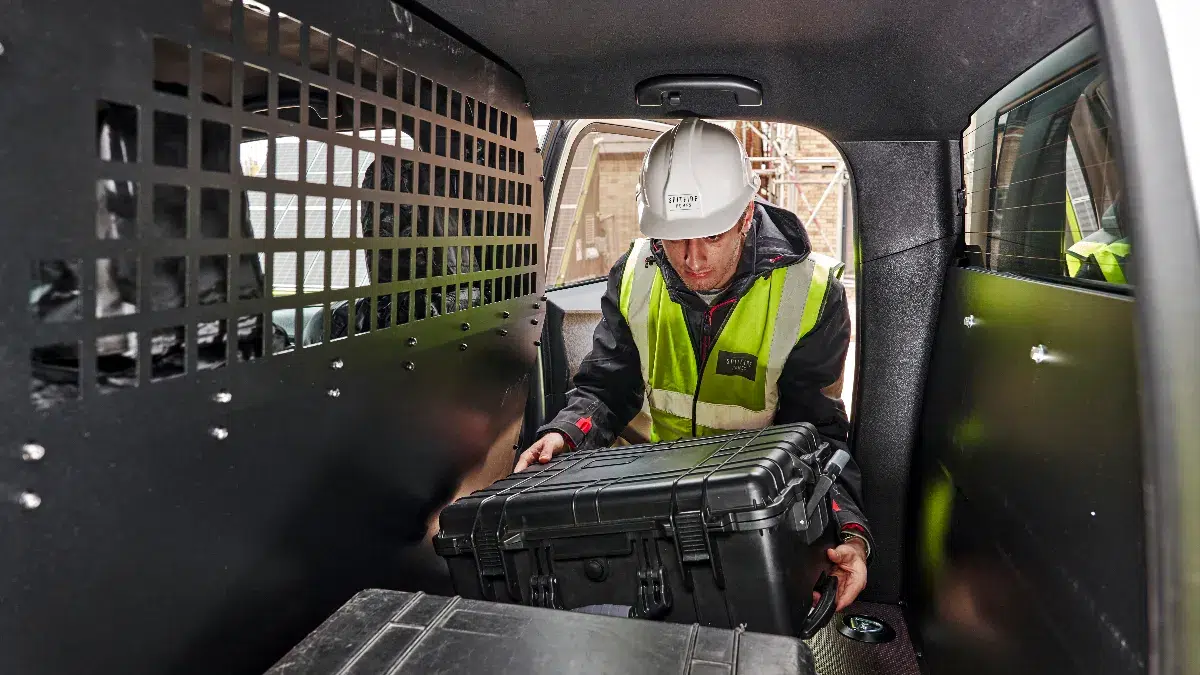

“Tax-dodge” 4x4s were a small but important part of the commercial vehicle landscape at the turn of the millennium. Their popularity probably peaked around a decade ago, when SsangYong (now KGM) was producing scores of modified versions of its passenger cars, such as the Korando Commercial.
Alongside that were LCV versions of the Nissan Pathfinder Commercial, Mitsubishi ASX Commercial, Mitsubishi Outlander Commercial, Land Rover Discovery Commercial and many others.
Even hatchbacks got involved. Beyond the popular Ford Fiesta Van and Vauxhall Corsa Van, there were models like the Peugeot 206 Van, Renault Clio Commercial and several more that are now largely forgotten. They were so popular we even did a group test of cheap tax dodging commercial vans.
Other countries have long embraced the idea. For years, the most popular commercial vehicle in Denmark was the Nissan Qashqai. We have already shown how several cars in the Kia range might look as vans, although Kia would probably be better off focusing on the PV5 Cargo as its main commercial vehicle.
In short, if it had a boxy rear, there was no reason it could not be a van.
It's also a trend that's made something of a comeback with the Suzuki Jimny Commercial and the KGM Rexton Commercial. Not to mention the Ineos Grenadier Commercial, which looks like it was designed from day one as a van then went the other way by adding seats!
When it comes to pick-up trucks, the hard work is already done. The loadspace is already there on the back, and to anyone looking at them they clearly appear to be commercial vehicles. Everyone seems to agree on that except the taxman.
In April, HMRC decided that double-cab pick-up trucks would no longer qualify as commercial vehicles for Benefit-in-Kind (BIK) purposes. In other words, if you had a company car that happened to be a pick-up, your tax bill increased sharply, in some cases by as much as five times.
For business owners and directors, especially those who used their pick-up privately or could not prove it was used solely for work, tax liabilities rose dramatically.
Not surprisingly, pick-up truck sales have dropped since the change. March saw a rush of registrations as sales were pulled forward, but since then the segment has been in decline. Some estimates suggest that as many as half of all pick-ups were bought as company vehicles, meaning they were affected by the BIK increase. Those sales are unlikely to return unless manufacturers can find a solution.
Isuzu has already taken action. It has launched the D-Max Commercial, a version of its double-cab pick-up without rear seats. By permanently removing the rear seats and fitting a bulkhead, the D-Max once again qualifies as a commercial vehicle. This allows customers to enjoy the premium specifications of a high-end pick-up, rather than being limited to a basic single-cab model, while avoiding the new BIK rates.
It seems likely that others will follow. Expect to see similar versions from Ford and Toyota in the near future, not only because of the UK’s unusual tax rules but also for other practical reasons.
While the D-Max Commercial was created in direct response to the UK tax changes, there is another factor that could encourage the trend. The Toyota Hilux BEV may have a lower BIK rate in the UK, but it still fails to meet the criteria to reclaim VAT because Hilux BEV payload is below one tonne.
Removing the rear seats will not push the Hilux BEV’s payload over the one-tonne threshold, but it will, like the D-Max, allow it to qualify once again as a commercial vehicle. The same logic applies in several other countries, where the absence of rear seats determines eligibility for benefits such as VAT exemption or reduced road tax.
It would not be surprising to see commercial versions of the Ford Ranger and Toyota Hilux appear before the next tax year.
So perhaps now is the time to list your rear seats on eBay, because the market is about to be flooded with them. Who knows, maybe pick-up truck seats will become the next trendy coffee shop or office breakout-area furniture.